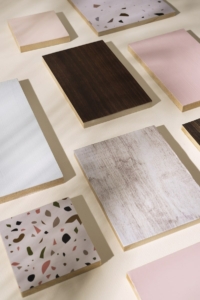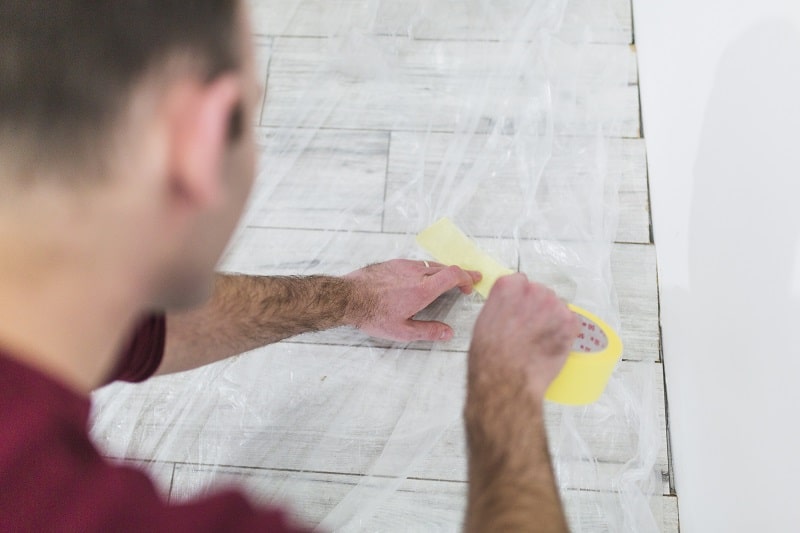A Step-by-Step Guide: How to Install Kitchen Backsplash Like a Pro
Transforming your kitchen into a culinary haven takes more than just top-tier appliances and chef-grade utensils—it’s also about creating a visually striking ambiance. Installing a stylish kitchen backsplash is one of the most effective ways to do this.
A carefully installed backsplash not only adds a splash of personality to your kitchen, but it also offers practical benefits. It provides a robust protective layer, safeguarding your walls from stains, splashes, and spills during those hectic cooking sessions.
You can achieve a professional-looking finish by following this comprehensive on how to install kitchen backsplash.
Planning, Materials, and Tools
The first steps how to install a kitchen backsplash are proper planning, gathering suitable materials, and ensuring you have all the necessary tools. Your project can efficiently run into snags without the proper preparation.
Here is a comprehensive list to help ensure you’re well-prepared:
Planning
Begin by deciding the look you want to achieve with your backsplash. Consider your kitchen’s existing color scheme, your preferred tile material and pattern, and the type of grout that will complement your choice.
Kitchen Backsplash Materials
The primary material for this project will be your tiles. These can be ceramic, glass, stone, or porcelain and will be the main visual element of your backsplash. Other kitchen backsplash materials include:
- Thin-set Mortar: This will adhere the tiles to the wall.
- Non-sanded Grout: Used to fill in the gaps between your tiles. A non-sanded grout is preferred for backsplashes as it won’t scratch the tile surface.
- Tile Spacers: These ensure consistent space between your tiles.
- Sealer: A sealer will be required if you use natural stone tiles to prevent staining.

Tools
Gather the necessary tools for your project. These will include:
- Tape Measure and Level: These will ensure accurate measurements and a level installation.
- Notched Trowel: This is used to apply the thin-set mortar to the wall.
- Grout Float: You’ll need this to apply the grout between the tiles.
- Tile Cutter or Wet Saw: You’ll use this to cut tiles for the edges of your backsplash and around outlets.
- Bucket and Sponge: These will be used for mixing the grout and cleaning up excess from the tiles.
- Safety Equipment: Remember safety glasses and gloves to protect yourself during installation.
Steps How to Install Tile Backsplash in Kitchen
As you learn how to install backsplash in the kitchen, custom cabinets in Las Vegas could be the perfect addition to complement your newly installed backsplash. Now, let’s move on to how to install the kitchen backsplash.
Figure Out Your Design
Before starting, decide on your design. This may include the pattern, color, and style of the tile you want to use. You could choose a herringbone, brick, or mosaic pattern, depending on your taste. Be creative and think outside the box – remember, your backsplash reflects your personality!
Calculate Your Tile Measurements
Knowing how to install a backsplash kitchen involves a bit of math. Backsplash tile installation requires accurate measurements to ensure you purchase the correct tiles. Measure the height and width of the space where you plan to install the backsplash, then multiply these two numbers to get the square footage. It’s a good idea to buy about 10% more tiles than you need to account for breakage or miscalculations.
Clean the Wall
For a successful backsplash tile installation, the wall where the backsplash is to be installed must be clean and smooth. Remove any grease, dirt, or wallpaper, and fill any cracks or holes with a suitable filler. Once filled, sand the area smoothly and wipe clean.
Draw a Center Line
Next, find the center of your wall and draw a vertical line. This line will guide you, ensuring your tile installation is level and centered.
Apply Thin-Set
Learning how to install tile backsplash in a kitchen involves mastering thin-set. Thin-set is a bonding mortar that sticks your tiles to the wall. Apply it evenly with a notched trowel, working in small sections to prevent it from drying before you’ve set your tiles.
Install the Tile Backsplash
Start from the bottom center and work your way up and out when installing the tile backsplash. This is a crucial part of learning how to install kitchen backsplash. Remember to place spacers between the tiles to ensure consistent grout lines. Please contact us if you have questions or prefer a professional to handle your installation.

Set the Tiles
After placing your tiles, press them into the thin set using a grout float. This will ensure that they’re firmly attached to the wall. Allow the thin-set to dry for 24 hours.
Apply the Tile Grout
Once the thin-set has dried, it’s time to grout. Applying a grout float at an angle ensures it fills all the spaces between the tiles. Be sure to remove any excess grout from the surface of the tiles with a damp sponge.
Wipe with Dry Towel
After the grout has dried (typically after 24 hours), wipe the tiles with a dry towel to remove any haze left by the grout. With that, you’ve completed the installation process of the kitchen backsplash.
Summary
Now that you’re equipped with this step-by-step guide, you can give your kitchen a refreshing, stylish upgrade. Embarking on this do-it-yourself project, you’ll add a personal touch to your kitchen and enhance its functionality. Remember, take your time and enjoy the process; each tile placed brings you closer to a beautifully transformed kitchen.





